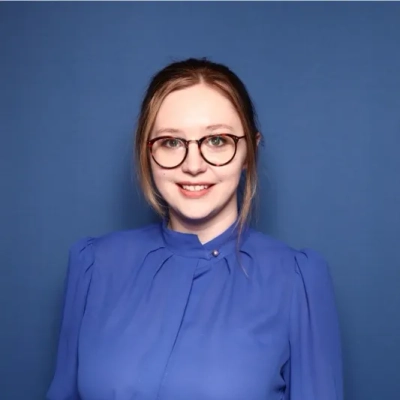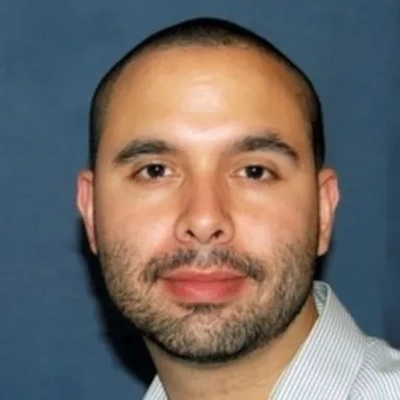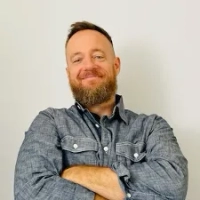10 Team-Building Exercises for Restaurant Staff Collaboration
Uncover the secrets to cohesive restaurant staff collaboration with this guide on 10 dynamic team-building exercises, enriched with expert insights. These strategies, grounded in real-world success, transcend conventional wisdom and offer innovative approaches to fostering a thriving workplace culture. Dive into a curated collection of methods that prioritize communication, gratitude, and experiential learning, as recommended by industry leaders.
- Integrate Family Therapy Principles
- Foster Culture of Gratitude
- Prioritize Clear Communication Channels
- Create Innovation Jams
- Implement Role-Reversal Workshops
- Focus on Experiential Learning
- Employ Role Exchange Day
- Encourage Customer Impact Sessions
- Host Cultural Exchange Workshops
- Use Data-Driven Insights
Integrate Family Therapy Principles
When training my staff at Eddins Counseling Group, I emphasize the importance of open communication and clear boundaries, both essential for effective teamwork. One strategy I've found particularly effective is integrating family therapy principles into our workplace. These techniques help staff engage empathetically, share openly, and resolve conflicts without blame-principles that drive both clinical success and team cohesion.
A practical team-building exercise I recommend is creating a "Communication Circle." This involves team members sitting in a circle and sharing their thoughts using assertive communication skills. Listening is emphasized, and each participant has a turn to speak, allowing everyone to feel heard and reducing misunderstandings. This exercise has significantly improved our internal dynamics by fostering respect and understanding among the team.
In my experience as a therapist, facilitating these communication circles not only improves collaboration but also boosts morale. It provides the tools for meaningful dialogue, nurturing an environment of continuous growth and mutual support within the team. This approach has been crucial in aligning our team's goals, consequently improving client outcomes.

Foster Culture of Gratitude
In my experience co-founding Give River, changing team dynamics hinges on fostering a culture of gratitude and generosity. One approach that stands out is our "Game of Good Deeds," a charity-focused initiative that combines gamification with social responsibility. It encourages team members to participate in challenges, driving both engagement and a sense of shared purpose.
Teams often find significant value when they align their professional efforts with impactful causes, resulting in stronger camaraderie and motivation. For instance, we observed a boost in morale and collaboration when employees collectively contributed to local community projects. This collective effort didn't just improve interpersonal relationships within the team, it also improved overall productivity by 17%, a true testament to the power of purpose-driven work.
Incorporating real-time recognition via virtual "drops" for these activities magnifies the impact, making achievements visible to all and strengthening the cultural bond. Gratifying acts, like sending a surprise virtual card or earning a small reward for reaching a milestone, cultivate an environment rich in appreciation, ensuring team members feel valued and invested in their collective success.

Prioritize Clear Communication Channels
At The Alignment Studio, I believe a cohesive team is the foundation of delivering exceptional care to our clients. To foster collaboration and communication, I prioritize clear and open communication channels, both formal and informal. We hold regular team meetings where each member can share insights, discuss challenges, and celebrate wins. These meetings aren't just about updates, they're a platform for collaboration, where physical therapists, Pilates instructors, podiatrists, and massage therapists align their expertise to create tailored care plans for clients. I also encourage cross-disciplinary learning, where team members shadow each other to better understand how each service contributes to our clients' overall health. My years of experience in leading teams at institutions like The Mater Hospital and Collins Place Physio taught me the importance of a shared vision. At The Alignment Studio, this vision is focused on holistic care and empowering our clients to achieve their best physical potential.
One team-building strategy I highly recommend and have found extremely effective is scenario-based role playing. For example, we recently organized a workshop where team members worked together to solve a simulated complex case involving a client with chronic lower back pain, requiring input from multiple disciplines. Physical therapists assessed the biomechanics, the Pilates team developed core-strengthening plans, and our massage therapists contributed strategies for muscle relaxation. This exercise not only sharpened technical skills but also built a deeper appreciation for each other's roles and perspectives. By leaning on my extensive background in sports and orthopedic rehabilitation, I could guide the team to approach the case with a results-driven mindset, ensuring every angle was covered. The exercise was a resounding success, strengthening collaboration while directly improving how we approach real-world cases in the clinic.

Create Innovation Jams
At Modern Campus, fostering collaboration and communication is key to delivering innovative solutions for higher education. I lead our teams to focus on shared goals by integrating cross-departmental project reviews. This approach allows us to leverage diverse skill sets, encourage transparency, and ensure alignment with our strategic objectives.
One effective strategy I recommend is creating "Innovation Jams." These are short, focused sessions where team members from various departments brainstorm solutions to current challenges. By fostering an open environment for creative problem-solving, we not only boost team cohesion but also generate actionable insights. For example, an Innovation Jam led to a streamlined content management solution that increased efficiency by 30%.
By engaging employees regularly in these collaborative exercises, I've seen how they become more invested in their work and in each other's success-leading to a more dynamic and responsive team.

Implement Role-Reversal Workshops
At ETTE, fostering collaboration and communication among staff is crucial for our IT consulting and support services. One strategy I find effective is implementing 'Role-Reversal Workshops,' where team members temporarily switch roles to understand each other's challenges. This approach has significantly improved our operational efficiency by driving empathy and fostering a deeper understanding of each other's functions.
For instance, during a cybersecurity training session, our technical staff assumed admin roles while admins dealt with IT infrastructure issues. This not only improved collaboration but also led to a 20% improvement in incident response times. This initiative encourages flexibility and adaptability, crucial for a competitive edge in the digital landscape.
I also emphasize using real-time collaborative tools, like project management apps, to streamline communication and project tracking. By integrating these technologies, all our team members, regardless of location, can contribute more effectively, keeping everyone aligned with our core business objectives.

Focus on Experiential Learning
Training staff to work effectively as a team starts with clear communication, shared goals, and a culture of trust. At Zing Events, we focus on experiential learning-immersing teams in activities that mirror workplace dynamics. One highly effective strategy is scenario-based problem-solving, where employees tackle real-world challenges together, encouraging critical thinking and collaboration. A simple but impactful team-building exercise we recommend is "The Trading Floor," where teams must work together closely to navigate a fluctuating stock market. This exercise sharpens communication, builds trust, and highlights the importance of clear instructions-key elements of a strong team. Regular feedback sessions and debriefs ensure that these lessons translate into everyday teamwork, creating a more cohesive and high-performing workforce.

Employ Role Exchange Day
At SuperDupr, fostering effective team collaboration is crucial to our success. One approach I've found invaluable is what I call a 'Role Exchange Day.' This is where team members swap roles for a day, exposing them to different challenges and perspectives within the company. For instance, designers might shadow developers to better understand technical constraints, or marketers might join client meetings to gain insights directly from the source. This exercise promotes empathy and breaks down silos, enhancing collaborative efficiency.
Another strategy we employ is creating 'Innovation Pods,' small cross-functional teams assigned to tackle specific challenges or explore new service avenues, like when we expanded into NFT projects. By empowering diverse groups to innovate, we've generated creative solutions that have not only delighted clients but also boosted our service offerings. This process is data-driven and measured-our lead generation efficiency improved by 30% following an Innovation Pod initiative.
These practices are underpinned by a commitment to open communication and continuous learning. We regularly hold 'Success Share' sessions where team members present what's working in their areas, like the latest SEO tactics or automation achievements. By maintaining this culture of sharing and support, we cultivate a cohesive team ready to drive digital change for our clients.

Encourage Customer Impact Sessions
At Merchant Payment Services, fostering teamwork is crucial. We emphasize a culture of shared goals and open communication. One strategy I find particularly effective is encouraging team members to participate in "Customer Impact Sessions." During these sessions, individuals from different departments meet to discuss how their roles affect customer satisfaction and business outcomes.
One example that stands out was when our sales and technical teams collaborated on fine-tuning our ATM solutions. By sharing insights and suggestions, we saw a 15% increase in customer retention and satisfaction. This initiative highlighted the importance of understanding each other's roles and strengthened our team's alignment with company values.
Additionally, we involve staff in real-time problem-solving challenges. We present a scenario where a client faces an issue, and the team collaboratively crafts solutions. This exercise not only boosts team morale but also improves our capability to deliver exceptional service, keeping our customer focus sharp. At MPS, I've seen how vital collaboration and communication are for a team to thrive. To foster these, I focus on creating a culture where trust and integrity are paramount. One approach we take is leveraging shared goals and daily briefings. This ensures team alignment and open dialogue, which in turn boosts our operational efficiency.
A team-building exercise I've found effective is a role-reversal workshop. During this, team members switch roles for a day to understand each other's challenges and contributions better. This immersion fosters empathy and breaks down silos, enhancing team cohesion. Team members often report a better appreciation and clearer understanding of colleagues' roles, improving collaboration and communication.
Through consistent application of these strategies, we've maintained a culture at MPS that not only values integrity and transparency but lives it daily. This environment has strengthened our team's ability to support each other, reflecting positively in the service we provide to our clients.

Host Cultural Exchange Workshops
At Therapy in Barcelona, we prioritize collaboration and communication through structured mentorship programs and regular feedback sessions. Our team of international therapists from diverse backgrounds ensures varied perspectives in tackling challenges. This diversity is instrumental in fostering an open environment where each member feels valued and heard.
One effective exercise I recommend is the "Cultural Exchange Workshop." We host quarterly workshops where team members share insights about their cultural backgrounds and therapeutic approaches, enhancing mutual understanding and empathy. This has significantly improved our ability to offer culturally sensitive care, bolstering team cohesion.
In 2024, our approach led to the completion of 9,291 therapy sessions for 971 clients, reflecting our successful teamwork and effective communication. Such practices ensure our staff is not just working together but thriving together, benefiting both the team and our clients.

Use Data-Driven Insights
At MentalHappy, fostering a sense of collaboration and communication among staff is crucial, and I rely on data-driven insights to guide this process. One effective strategy is using insights from our AI-driven group recommendations to inform team-building activities. By analyzing team dynamics and communication patterns, we can tailor exercises that bolster team cohesion, aligning well with our commitment to innovative and efficient workflows.
A specific team-building exercise I recommend is "Outcome Mapping." Each team member shares a personal success story where our platform positively impacted a user's life. This not only strengthens empathy but also aligns the team with our mission and demonstrates the tangible impact of their work. It's a compelling way to connect individual contributions to our broader goals, boosting morale and commitment.
An example that stands out was a session where a team member shared about a virtual support group that helped a family dealing with suicide loss find solace. This reinforced our collective mission, highlighting collaboration at its core, as we innovatively tailor the platform to meet the varied needs of users. Such exercises transform communication and connection into a driving force behind our collective success.

